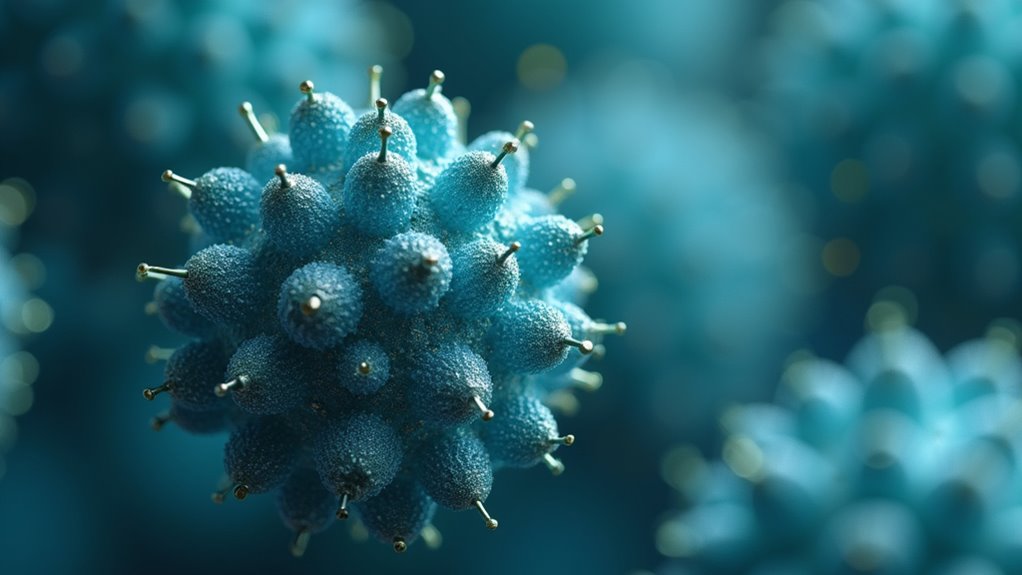Nanoparticles are transforming drug delivery by allowing you to target tissues precisely, improve drug stability, and reduce side effects. They are engineered from various materials, with surface modifications that enhance targeting and uptake. You can use different administration routes, like oral, intravenous, or inhalation, to boost bioavailability. Their multifunctionality supports co-delivery and imaging, making treatments more effective. Explore how these innovations are shaping future therapies as you uncover more about this exciting field.
Key Takeaways
- Nanoparticles enable targeted drug delivery via passive (EPR effect) and active (ligand recognition) mechanisms, increasing precision and efficacy.
- Surface modifications allow nanoparticles to cross biological barriers, improve stability, and reduce systemic toxicity.
- Nanoparticles protect drugs from degradation, enhance bioavailability, and support sustained or controlled release profiles.
- Stimuli-responsive nanoparticles enable on-demand drug release triggered by pH, temperature, light, or magnetic fields.
- Multifunctional nanoparticles facilitate theranostics, combining therapy and imaging for personalized, minimally invasive treatments.
Engineering and Composition of Nanoparticles
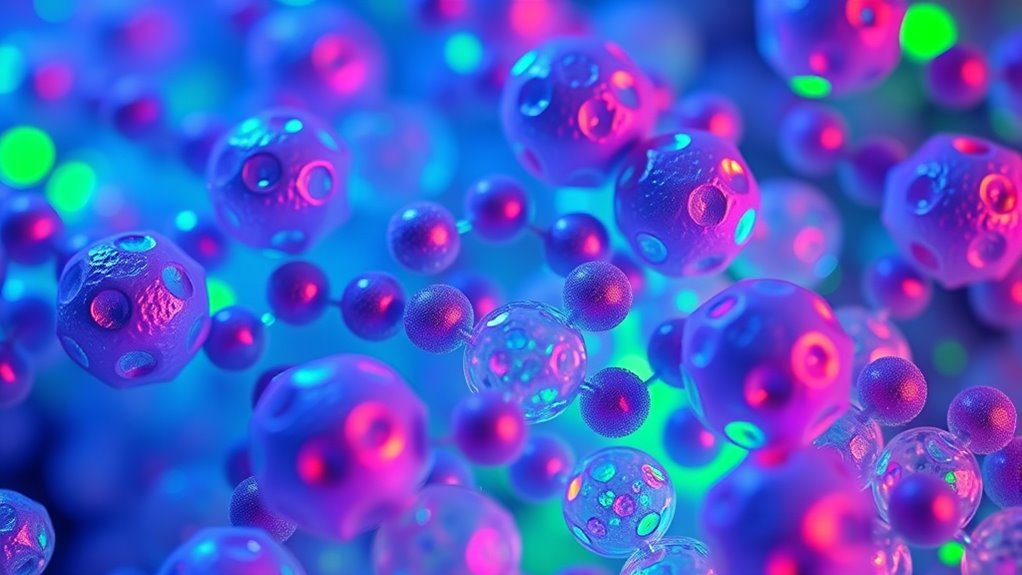
Engineering and composition of nanoparticles involve selecting suitable materials and designing their physical and chemical properties to optimize drug delivery. You can choose from biological materials like phospholipids, lipids, dextran, chitosan, or synthetic components such as polymers, silica, carbon, and metals like iron or cadmium. Engineered systems utilizing nanoparticles for targeted, controlled therapeutic delivery enhance treatment efficacy by minimizing side effects and reducing administration frequency. Polymeric nanoparticles offer tunable chemical properties, allowing customization for specific applications. Inorganic nanoparticles enhance therapy efficacy and specificity. You manipulate size to penetrate biological barriers and control drug release, while surface features—charge, hydrophobicity, and ligand functionalization—affect biological interactions and targeting. The high surface-area-to-volume ratio boosts drug loading and biomolecule interaction. Geometric and chemical tunability enable you to optimize cellular uptake, biodistribution, and targeted delivery, making nanoparticles versatile tools in drug delivery systems. Additionally, biocompatibility is a critical factor in designing nanoparticles to ensure safety and minimize immune responses.
Mechanisms for Targeted Delivery
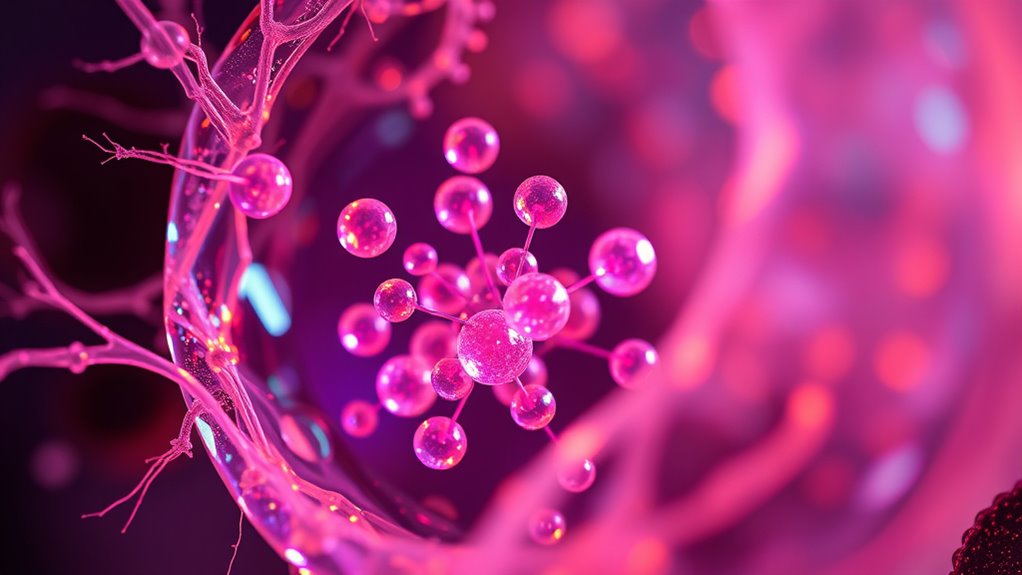
Targeted delivery mechanisms harness the unique properties of nanoparticles to direct therapeutic agents precisely where they’re needed. Passive targeting exploits the EPR effect, allowing nanoparticles to gather in tumor tissues due to leaky blood vessels and poor lymphatic drainage. This effect is especially significant in tumor environments, where abnormal vasculature facilitates nanoparticle accumulation. Active targeting involves designing nanoparticles with ligands that recognize and bind to specific receptors on target cells, increasing delivery accuracy. Nanoparticles also improve drug bioavailability by protecting therapeutics from degradation and enhancing delivery efficiency. Their stability and solubility are improved through engineering, ensuring drugs remain effective until reaching their destination. By customizing surface ligands and optimizing size, nanoparticles can selectively accumulate in tissues like tumors or inflamed areas, maximizing therapeutic impact while minimizing systemic side effects.
Routes of Administration and Bioavailability Enhancement

Routes of administration markedly influence the bioavailability of nanoparticle-based therapeutics, with each pathway presenting unique advantages and challenges. Oral delivery is preferred but faces hurdles like stomach acidity and enzymes that degrade drugs. Nanoparticles can protect drugs with enteric coatings that dissolve in the intestine, improving stability and absorption. They also enhance solubility and enable sustained release, addressing issues with poorly water-soluble drugs. Additionally, understanding the second trimester stage of pregnancy helps in optimizing drug safety and timing for pregnant patients. Intravenous administration offers rapid, efficient absorption, reduces aggregation, and allows targeted delivery to specific tissues, boosting systemic bioavailability.
Sublingual and buccal routes bypass first-pass metabolism, increasing absorption of fragile drugs like peptides.
Pulmonary delivery enables deep lung penetration, bypasses enzymatic degradation, and allows targeted, sustained release in lung tissue.
Each route can be optimized to maximize therapeutic efficacy.
Therapeutic Benefits and Functionalities
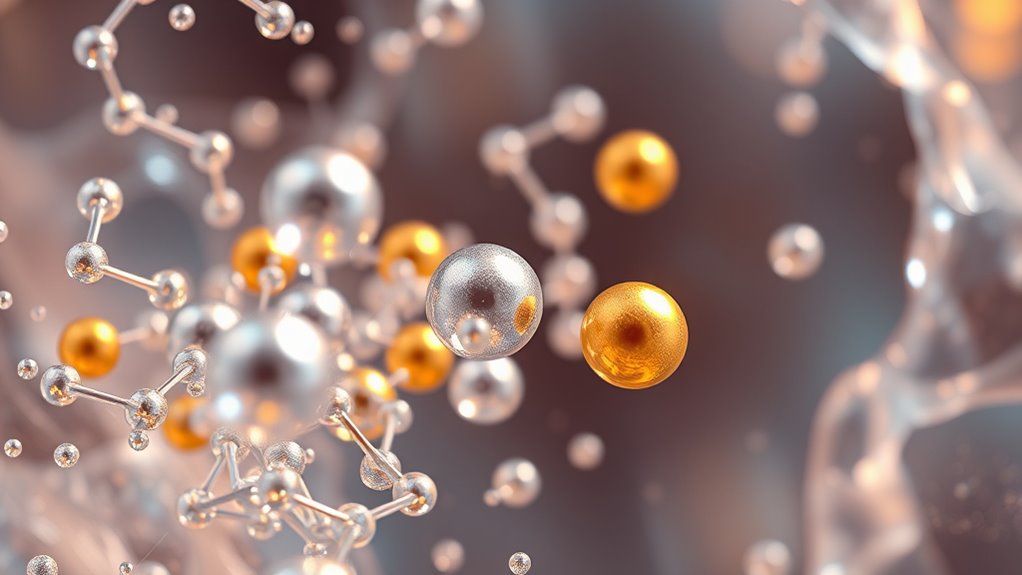
Nanoparticles offer numerous therapeutic benefits by enhancing drug stability, controlling release, and increasing efficacy. They extend shelf life and enable sustained drug release, maintaining therapeutic levels over time. Manipulation of materials at the nanoscale allows for precise engineering of nanoparticle properties to optimize drug delivery. With high carrier capacity, you can load both hydrophilic and hydrophobic drugs, making delivery versatile. Targeting ligands like antibodies or folic acid allow nanoparticles to bind specifically to diseased cells, boosting local drug concentration and reducing systemic toxicity. This precision minimizes side effects and improves treatment outcomes. Nanoparticles also enhance bioavailability by protecting drugs from degradation, crossing biological barriers, and enabling alternative administration routes. Additionally, they can co-encapsulate multiple drugs for synergy or carry imaging agents for theranostics. Their multifunctionality supports personalized therapies, making drug delivery safer, more effective, and tailored to individual needs.
Applications in Various Medical Fields
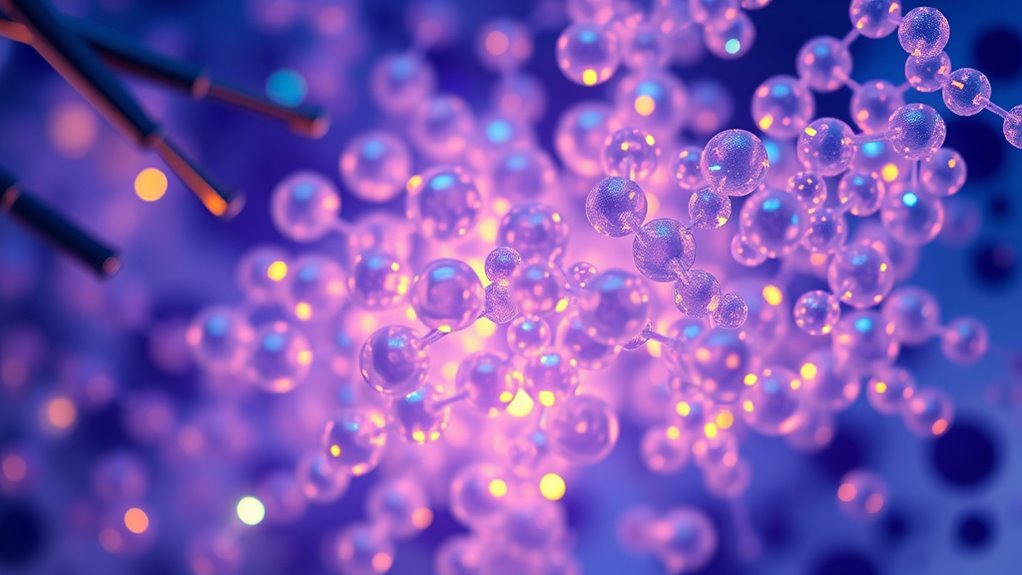
Nanomedicine’s versatility shines through its wide-ranging applications across diverse medical fields. In oncology, nanoparticles deliver chemotherapeutics directly to tumors, reducing damage to healthy tissue and overcoming drug resistance. Surface modifications enhance cellular uptake, while some cross the blood-brain barrier to treat brain cancers. Nanoparticles’ ability to be engineered for specific targeting allows for more precise treatment strategies and minimizes systemic side effects. For neurological disorders, nanoparticles facilitate drug delivery into the brain, enabling targeted treatment for Alzheimer’s and Parkinson’s, and assist in early diagnosis through combined imaging and therapy. In infectious disease management, nanoparticles improve drug solubility, reduce toxicity, and penetrate biofilms, boosting antimicrobial effectiveness. Pulmonary applications involve inhalable nanocarriers that enhance lung absorption and protect fragile drugs. Advanced nanotechnology methods further improve the design and functionality of these particles for various medical applications. In dermatology, nanoparticles improve skin penetration, stability, and controlled release of topical medications, advancing treatments for skin conditions and wound healing.
Challenges and Directions for Future Development
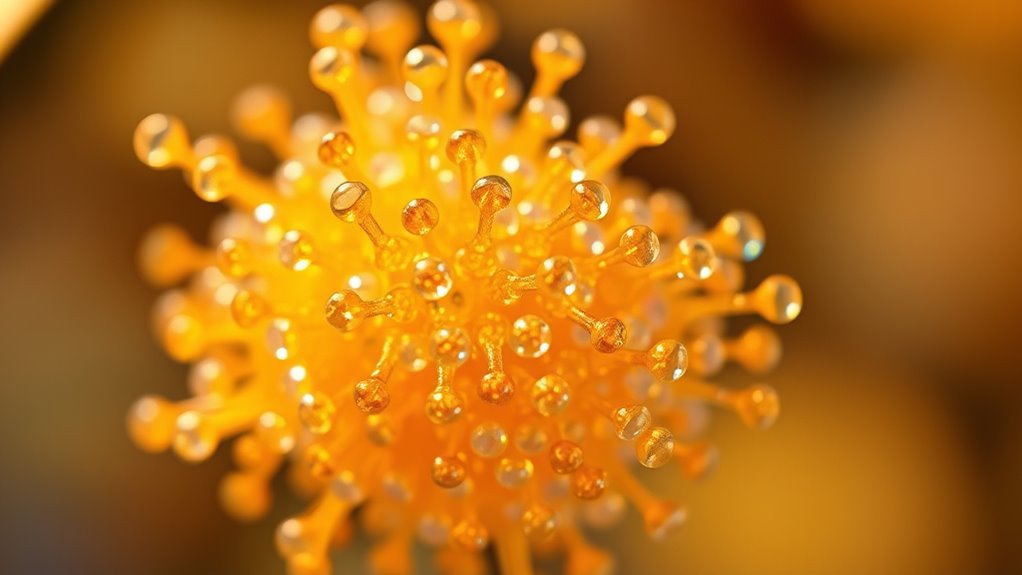
Despite its promising potential, the development of nanomedicine faces significant hurdles related to safety, manufacturing, and regulation. Nanoparticles can cause toxicity due to their small size and surface properties, making safety assessments complex. Ensuring biocompatibility is essential to avoid immune reactions and long-term effects, but variability in composition and shape complicates this process. Additionally, understanding chronic exposure and bioaccumulation remains limited. Research indicates that nanomaterials can interact unpredictably with biological systems, raising safety concerns. Moreover, the nanoparticle surface chemistry plays a crucial role in determining toxicity and immune response, adding another layer of complexity to safety evaluations. Manufacturing consistency is another challenge; producing uniform nanoparticles at scale with quality control is difficult and costly. Stability and controlled drug release also pose obstacles, as nanoparticles must remain stable in biological fluids and deliver drugs precisely. Finally, regulatory pathways are still evolving, often delaying clinical translation and requiring extensive safety and efficacy data.
Innovations in Smart and Stimuli-Responsive Nanoparticles
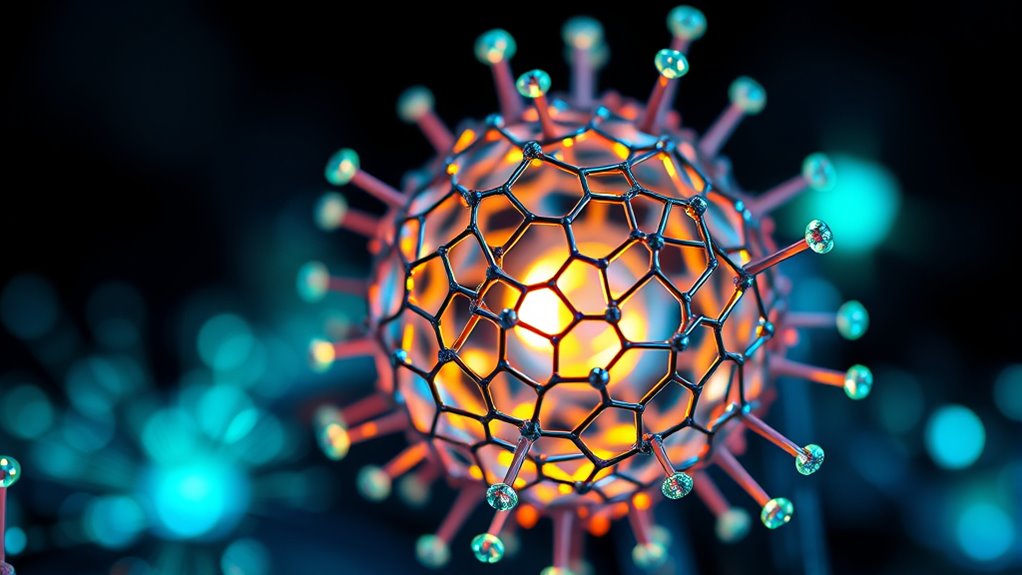
Innovations in smart and stimuli-responsive nanoparticles are transforming targeted drug delivery by enabling precise control over when and where medications are released. These nanoparticles respond to various triggers like pH, temperature, magnetic fields, light, and enzymes, allowing for site-specific therapy. For example, temperature-sensitive particles release drugs at targeted thermal thresholds, while magnetic-responsive ones can be activated remotely with magnetic fields. Light-responsive nanocarriers enable on-demand release with specific wavelengths, and enzyme-responsive systems degrade in response to disease-specific enzymes. Multi-stimuli systems combine triggers such as pH and temperature for enhanced precision. Additionally, understanding the underlying Honda Tuning principles can inspire innovative approaches to optimizing nanoparticle performance and stability.
Frequently Asked Questions
How Do Nanoparticles Interact With the Immune System During Drug Delivery?
You might wonder how nanoparticles interact with your immune system during drug delivery. They can either evade immune detection by using surface coatings like PEG, which prolongs circulation, or stimulate immune responses, activating complement and cytokines.
These interactions depend on nanoparticle properties, and balancing immune evasion with stimulation affects delivery efficiency and safety. Understanding these dynamics helps optimize nanoparticle design for better targeting and minimized side effects.
What Are the Long-Term Safety Implications of Nanoparticle Accumulation?
Did you know nanoparticles can stay in your body for over 120 days? Long-term accumulation raises concerns because they may cause organ damage, inflammation, or fibrosis, especially in the liver, spleen, and kidneys.
You should be aware that poor biodegradability and specific surface properties increase these risks, making it essential to carefully evaluate each nanoparticle’s safety profile.
Persistent particles might lead to chronic health issues that aren’t fully understood yet.
Can Nanoparticles Be Tailored for Personalized Medicine Approaches?
You can tailor nanoparticles for personalized medicine by designing them to target specific biomarkers unique to an individual’s disease. This customization allows for precise drug delivery, reducing side effects and increasing effectiveness.
You can also modify their surface properties for better compatibility and targeting. By doing so, nanoparticles become powerful tools in creating therapies that are customized to your genetic profile, improving outcomes and advancing personalized healthcare.
How Cost-Effective Is Nanomedicine Compared to Traditional Therapies?
Think of the cost-effectiveness of nanomedicine as planting a seed that may take time to grow. While initial costs are high due to complex development and manufacturing, you can reap benefits like reduced hospital stays and fewer side effects.
Over time, these savings can outweigh the expenses, especially with targeted delivery and improved efficacy. So, it’s an investment that might pay off by transforming how you manage health.
What Regulatory Frameworks Govern the Approval of Nanoparticle-Based Drugs?
Your question about regulatory frameworks for nanoparticle-based drugs highlights the complexity involved. You should know that agencies like the FDA and EMA oversee these therapies, but the lack of specific guidelines makes approval tricky.
You’ll find that pathways like NDA, BLA, and 505(b)(2) are used, depending on the product.
Challenges include safety assessments, quality control, and manufacturing consistency, requiring ongoing updates and stakeholder input for smoother approval processes.
Conclusion
As you explore the world of nanomedicine, remember that nanoparticles are like tiny ships steering your body’s complex waters, transforming drug delivery from a simple voyage into a precise, targeted mission. With ongoing innovations and smarter designs, you’re on the brink of a new era where treatments are more effective and personalized. Embrace these tiny warriors—because in the vast ocean of medicine, they’re the stars guiding us toward better health.
